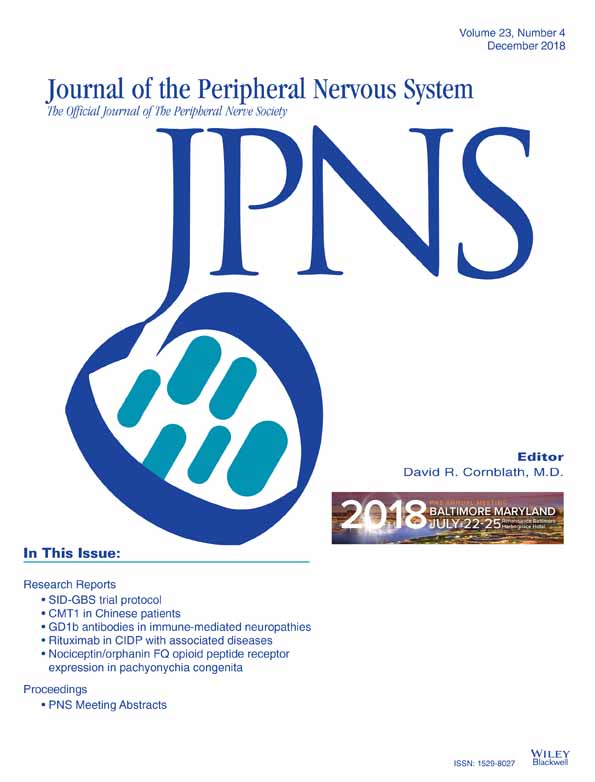Nociceptin/orphanin FQ opioid peptide-receptor expression in pachyonychia congenita
Abstract
Nociceptin/orphanin FQ opioid peptide (NOP)-receptor (NOP-R) is a member of the opioid receptor family. NOP-R activation has demonstrated analgesic effects in preclinical pain models without the addiction risks associated with other opiate targets. Pachyonychia congenita (PC) is a palmoplantar keratoderma characterized by neuropathic pain in affected skin. A cohort of KRT6A gene mutation PC patients with no other explanation for their neuropathic pain offered a unique opportunity to assess potential of NOP-R as a therapeutic target. Plantar biopsies from 10 PC patients and 10 age/gender matched controls were performed at the ball (PC-affected) and the arch (PC-unaffected) of the foot. NOP-R expression was assessed by immunohistochemistry. Localization of NOP-R in subsets of epidermal nerve fibers was investigated using the pan-neuronal marker PGP9.5, markers for unmyelinated peptidergic fibers (calcitonin gene-related peptide [CGRP] and substance P [SP]), as well as for myelinated Aδ and Aβ fibers (neurofilament H [NFH]). Robust NOP-R expression was detected in epidermal keratinocytes and in a subset of PGP9.5+ fibers in both epidermis and dermis, confirmed by western blot and absorption experiments with NOP-R peptide. NOP-R expression in keratinocytes was significantly reduced in PC-affected plantar skin compared with PC-unaffected skin. In addition, NOP-R expression occurred in dermal NFH+ myelinated fibers in all groups, although few CGRP+ fibers co-expressed NOP-R. Furthermore, most SP+ fibers also co-expressed NOP-R. These findings indicate that NOP-R is expressed on epidermal keratinocytes, as well as on epidermal and dermal nerve fibers and has potential as a promising target to treat neuropathic pain in PC.




